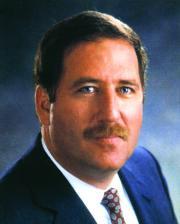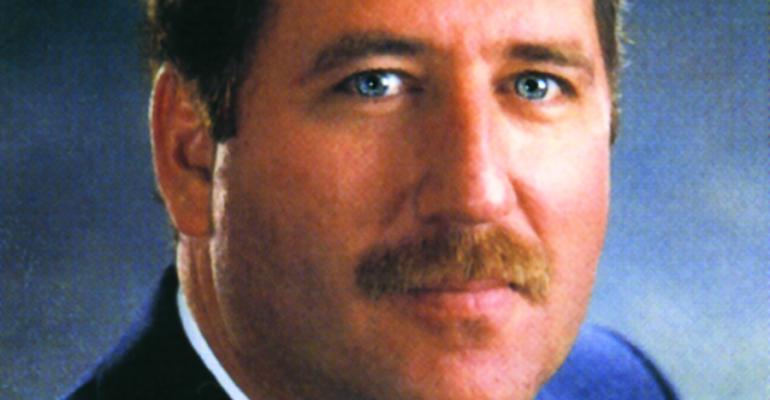
The best opportunity a salesperson has is the customer who just drove off the lot. Salespeople must follow up personally with every customer who took delivery of a vehicle from them and ask for the referral.
What’s the best way to follow up? Nine out of 10 people say they’d rather receive a phone call or handwritten note. Which would you rather receive?
In a Forbes article, Sprint Nextel CEO Dan Hesse tells how his company keeps in touch with customers through handwritten letters.
He says: “I know it is kind of old-fashioned, but I think in today’s digital world customers notice and appreciate that we take time to write letters to them. One employee and his team started a letter-writing campaign, thanking customers based upon their longevity.
“They would do it every Thursday, and it’s now mushroomed, and it’s become ‘Thank You Thursdays’ companywide. Our employees sit down with a list of customers, which includes something about the customers, like how long they have been with Sprint, and they handwrite letters thanking the customers for doing business with Sprint.”
Yet many salespeople think it’s not their job to follow up with customers after they take delivery of a vehicle. They trust an automated CRM system will provide customers with what they need.
Others are hesitant to call because they don’t know what to say or they are worried that there may be a problem with the customer or vehicle.
Yet this follow up represents a golden opportunity to prospect while putting the personal touch back into a relationship. Ask any salesperson, “When was the last time you had contact with someone who bought a vehicle from you?” Even though a salesperson may say they’ve called repeatedly, the truth is that 90% of the time the last point of contact was when the customer drove it out of the dealership. The reason is, most times, that the salesperson doesn’t know what to say.
Not only does a personal follow-up call improve your image, it cements the relationship with you and the customer and gives you the chance to ask for referrals. The only thing a salesperson brings to the dealership is time and talent. The dealer gives them a place to work, product to sell, and even brings leads in the door. But it’s the time and talent that makes the difference, and it’s the salespeople cultivating relationships and referrals who become top producers.
When a salesperson approaches a customer call with a positive attitude and chooses the words that will guide the conversation to a positive outcome, then success is virtually guaranteed.
Many salespeople don’t know what to say or how to say it. So they don’t make the call at all. Others are concerned that a customer will tell them something they don’t want to hear, can’t fix or can’t control.
The key is to never ask a question without knowing the answer and never to ask a question with an open-ended answer. This allows you to control the direction of the conversation, something like this:
Salesperson (SP): “Hi, this is Richard from APB. I am calling to follow up and see how everything is with the vehicle you took home yesterday. I have to ask you a question. Do you park the car in the street or in the driveway?”
That multiple-point question allows you to steer the conversation.
Customer: “I parked it in the driveway.”
SP: “Have any of your neighbors seen it? (pause for a second between the two questions) What did they say?”
Customer: “Yes, they loved in. Fred asked if he could take it for a spin!”
SP: “That’s awesome. Hey, would you mind if I gave Fred a call?”
Customer: “Sure, that’s a great idea! Here’s his number.”
BINGO! Just like that the salesperson got a referral – just by asking for it.
This conversation is the beginning of a personal, referral relationship. The most successful salespeople build on this. Every day they look to see who is scheduled to come in for service, and if it’s a customer they’ve worked with before, they make a point to greet them.
They get to know their clients and mark important milestones like when the new baby is due or a new pet joins the family or the son goes off to college. They send personal, hand-written notes and cards or make a call to offer congratulations or to send birthday wishes.
They buy Girl Scout cookies, support their clients in events like Relay for Life and make it their business to maintain a relationship.
They focus on the car, too, and send it birthday cards or anniversary cards marking the years that have passed since the car was new. These are subtle reminders that often lead to sales. (After all, who wants to drive a car they purchased seven or eight years ago?)
As a result, these salespeople close referrals at higher rates than those of first-time customers walking through the door. They consistently have a full pipeline of sales leads and referrals, and they’ve gained a reputation as THE salesperson to ask for among an ever-widening circle of influence in the community.
Most important, they earned a reputation as a transportation specialist, a trusted adviser who can help with all their transportation needs, who, regardless of the make or model, will help clients find it. Period.
These savvy salespeople are building clients – and referral sources – for life. They know that success comes not from selling products, but from selling and building a relationship.
Richard F. Libin is the author of the book, “Who Stopped the Sale?” (www.whostoppedthesale.com) and president of Automotive Profit Builders, a firm with 46 years of experience working with both sales and service on customer satisfaction and maximizing gross profits through personnel development and technology. He is at[email protected] or 508-626-9200 or www.apb.cc.





